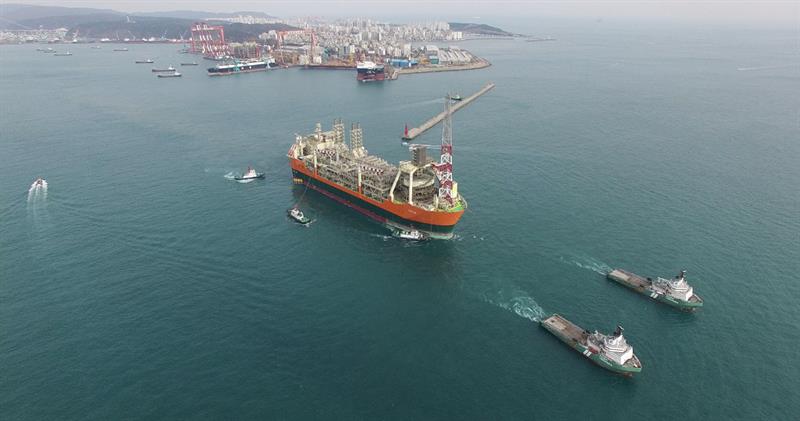A PwC report published last month, ‘A Sea Change’, based on interviews with more than 30 senior oil and gas executives from the UK, Norway and the Netherlands, does acknowledge that much progress has been made improving cost efficiency and implementing recommendations from the critical 2014 Wood Review of the sector.
But it proposes that the North Sea basin has only a two-year transformation window to ensure a strong, productive and profitable future for the sector.
Of the report, Alison Baker, PwC’s UK and EMEA oil and gas leader, says: “During our interviews, we picked up a real sense of urgency to create one last cycle of success that will retain and generate jobs, stimulate growth and ensure security of energy supply. But this was matched by a level of frustration at the fundamental issues that need tackling to avert the risk of rapid and premature decline.”
More than half of respondents, 58%, say that they feel positive about the future of the North Sea basin, despite real and present threats.

BP’s Glen Lyon floating production storage and offload (FPSO) vessel starts sea trials in December 2015 in advance of its installation west of Shetland for the Quad204 redevelopment project
Advice also comes from the Scottish Oil and Gas Industry Leadership Group, organised by public commercial development agency Scottish Enterprise but populated by industry executives, which published a revised oil and gas strategy in March.
Its original 2012 vision was updated to take into account the Wood Review, the new industry regulator and the fall in the oil price. That, plus the high cost base of UK operations, has had a large negative impact on jobs, investment and confidence. It says: “In addition, there is widespread agreement that significant change is required within the sector, in terms of culture and leadership, to respond to such challenges.”
And it adds: “If the industry takes the right steps to control its cost base, adopts new ways of doing things and keeps an eye on emerging opportunities, it will, as it has done before, emerge from the current challenging times and remain a vital part of the Scottish economy for many years ahead.”
One of the areas discussed is international development. Export has been found to be the way forward for one oil and gas support industry, as represented by Subsea UK, a niche trade association of companies supporting oil and gas with underwater technology, systems and processes. A survey published last month found that while 90% have seen sales decrease, more than half of the group’s revenues generated were due to international sales. Some 80% of respondents hope to drive growth by increasing overseas sales and exploring new markets.
Says Subsea UK chief executive Neil Gordon: “The findings from our survey underline the negative impact on revenues and recruitment but they also reveal positive signs of the sector adjusting and adapting to the lower for longer oil price environment, which will ensure we are well placed for the future.”
The Industry Leadership Group says its hopes for improving the sector are pinned on its supply chain. “There is a need for the supply chain to deliver new technologies and solutions to help bring about the change in the industry that is widely recognised as being required,” it says. On the other hand, they acknowledge that supply chain companies need more support for innovation.
To that end, at least north of the border, where the North Sea supply chain dominates manufacturing, Scottish Enterprise has recently extended its support offering for manufacturers. Last month, its Scottish Manufacturing Advisory Service (SMAS) launched an asset review to help manufacturers decide how to invest to build global competitiveness.
The review, said to take in all aspects of a business to understand the impact of equipment on capacity, performance and productivity, is free of charge. Following the review, businesses are encouraged to develop investment plans to increase competitiveness through plant, machinery and new technology options. They are also offered help finding funding, such as Scottish Enterprise’s regional selective assistance grants, for example.
This service is being offered because, like the oil and gas industry, Scottish manufacturing needs to improve. Nick Shields, director of SMAS, says: “Manufacturing continues to be a vital component of our economy. It provides over half of Scotland’s international exports, half of our research and development spend, and employs nearly 190,000 people. However, comparable economies continue to out-perform Scotland, particularly when it comes to making capital investment in manufacturing.”
One of the less desirable changes in the oil and gas industry has been the reduction in employment. It has fallen by a quarter since its height in 2014, according to research by Experian commissioned by trade body Oil & Gas UK.
It says: “Brent crude is currently trading at around $50 a barrel, less than half the price it was in 2014 when jobs linked to the sector peaked at over 450,000. Jobs supported fell by an estimated 84,000 to around 370,000 in 2015, and are forecast to have fallen a further 40,000 by the end of this year.”
These figures include not only direct employment by extraction companies and their contractors, but also indirect jobs in the wider supply chain and surrounding service industries.
Chief executive of Oil & Gas UK, Deirdre Michie, says: “The industry has been spending more than it is earning since the oil price slump towards the end of 2014. This is not sustainable and companies have been faced with some very difficult decisions. To survive, the industry has had no choice but to improve its performance.
It is looking to find efficiencies to restore competitiveness, to attract investment and stimulate activity in the North Sea. With up to 20 billion barrels of oil and gas still to recover, this region is still very much open for business.”
Referring to the current total of jobs supported directly and indirectly by oil and gas production, she adds: [that figure of] “330,000 jobs is still a significant number, but the total employment we will sustainably provide depends on the level of investment attracted into the basin. If investment falls, then so will jobs. The interventions we make now will be critical to shape the industry’s direction and help stem future losses.”
Box item
At least some North Sea development continues
Good news for UK oil and gas comes from BP that has doubled its interest in the Culzean development in the UK Central North Sea, following its acquisition of an additional 16% interest from JX Nippon (to 32%). The Maersk-operated Culzean field development was sanctioned in August 2015 and production is expected to begin in 2019. Mark Thomas, BP regional president North Sea Region, says: “This is a challenging time for the industry and we must continue to work together to ensure that when developments like Culzean, or other projects such as BP’s Quad 204 and Clair Ridge, come online they can be run as efficiently as possible.”
This article was first published in the Machinery July 2016 energy supplement.




